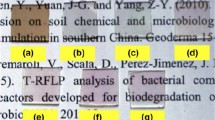Abstract
In this work, the current–voltage characteristics of titanium oxynitride thin films were measured and the charge carrier transport mechanisms established as a function of film composition. The films were deposited by magnetron sputtering, where the oxygen/nitrogen ratio was varied via a pulsing technique to enable the achievement of desired concentrations. Thus, the obtained films showed metallic titanium nitrate (TiN) or semiconductor titanium dioxide (TiO2) character and were used to fabricate metal–insulator–metal structures. An ohmic conduction mechanism was identified in the films with higher nitrogen incorporation or presenting TiN-rich phase. Decrease in the nitrogen content resulted in films with TiO2-rich phase. In this case, Poole–Frenkel and space-charge-limited current conduction mechanisms were observed. The dielectric constants were calculated from the high-frequency capacitance–voltage dependences, with a reduction from 10 to 3 being observed due to the stoichiometric changes and probable incorporation of defects into the film structure. Finally, the film composition and structural characteristics of the films were revealed by Rutherford backscattering and x-ray diffraction techniques, respectively.
Similar content being viewed by others
References
H.-S.P. Wong, IBM J. Res. Dev. 46, 133 (2002).
B. Magyari-Köpe, M. Tendulkar, S. Park, H.D. Lee, and Y. Nishi, Nanotechnology 22, 254029 (2011).
R. Asahi, T. Morikawa, T. Ohwaki, K. Aoki, and Y. Taga, Science 293, 269 (2001).
W.D. Brown and W.W. Grannemann, Thin Solid Films 51, 119 (1978).
A. Maurya, P. Chauhana, S.K. Mishrab, and R.K. Srivastavab, J. Alloys Compd. 509, 8433 (2011).
T.W. Hickmott, J. Appl. Phys. 87, 7903 (2000).
O. Mitrofanov and M. Manfra, J. Appl. Phys. 95, 6414 (2004).
K.C. Kao, Dielectric Phenomena in Solids, 1st edn. (San Diego: Elsevier Academic, 2004), pp. 345
G.G. Raju, Dielectrics in Electric Fields, 1st edn. (New York: Marcel Dekker, 2003), pp. 356
P. Barquinha, L. Pereira, H. Aguas, E. Fortunato, and R. Martins, Mater. Sci. Semicond. Process. 7, 244 (2004).
N. Martin, J. Lintymer, J. Gavoille, J.M. Chappé, F. Sthal, J. Takadoum, F. Vaz, and L. Rebouta, Surf. Coat. Technol. 201, 7720 (2007).
J. Chappé, N. Martin, J. Lintymer, F. Sthal, G. Terwagne, and J. Takadouma, Appl. Surf. Sci. 253, 5312 (2007).
S. Boukrouh, R. Bensaha, S. Bourgeois, E. Finot, and M.C. Marco de Lucas, Thin Solid Films 516, 6353 (2008).
C. Vallée, P. Gonon, C. Jorel, F. El Kamel, M. Mougenot, and V. Jousseaume, Microelectron. Eng. 86, 1774 (2009).
R.D. Gould and M.G. Lopez, Thin Solid Films 433, 315 (2003).
E. Hourdakis and A.G. Nassiopoulou, Microelectron. Eng. 90, 12 (2012).
P.V. Aleskandrovaa, V.K. Gueorguiev, Tz.E Ivanov, and J.B. Koprinarova, Eur. Phys. J. B 52, 453 (2006).
D.J. Harra, J. Vac. Sci. Technol. 13, 471 (1976).
X.-G. Zang and S.T. Pantelides, Phys. Rev. Lett. 108, 266602 (2012).
Acknowledgements
The authors acknowledge financial support from The State of São Paulo Research Foundation (FAPESP) Project 2010/11294-7. Also, CAPES/PVE (Project BEX 9796/12-6), CAPES/PVNS, CAPES (02765/098), and the Associated Laboratory of Sensors and Materials (LAS-INPE), the Laboratory of Integrated Systems (LSI-USP), the Laboratory for Material Analysis with Ion Beams (LAMFI-USP), and the Laboratory for Characterization of Semiconductor Devices (LCDS-IEAv) are highly acknowledged.
Author information
Authors and Affiliations
Corresponding author
Rights and permissions
About this article
Cite this article
Libardi, J., Grigorov, K.G., Moraes, R.S. et al. Electrical Conduction Mechanisms in Metal–Insulator–Metal (MIM) Structure with TiO x N y Thin Films Deposited with Different O/N Ratios. J. Electron. Mater. 44, 103–109 (2015). https://doi.org/10.1007/s11664-014-3470-1
Received:
Accepted:
Published:
Issue Date:
DOI: https://doi.org/10.1007/s11664-014-3470-1




